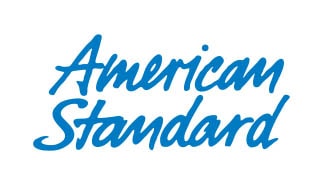Published on
November 1st, 2021Get Ready for Winter Tips: Prevent Freezing Pipes and Make Sure Your Plumbing System Is Set for Cold Weather
No matter what size property you own or manage in New York City, freezing pipes in winter are a huge headache. Even worse, they can cause damage, increased insurance premiums, and tenant litigation if they burst. By addressing the potential for freezing pipes in advance, you can make sure your plumbing system isn’t at risk for blockage or damage. Follow these get ready for winter tips to protect your property, whether it’s a single-family house, duplex, brownstone, apartment building, or commercial rental.
Know the Signs of Vulnerable Pipes
These are the pipes most likely to freeze
First, it’s helpful to understand which pipes in your home or rental are most likely to freeze when the temperature plummets. Not only does this prevent burst pipes, which saves you hassles and money, but it also reduces your energy costs. Vulnerable pipes usually lose heat that is meant for hot water and steam radiators. When your pipes are protected (see below), your boiler doesn’t have to cycle as often, which saves on fuel expenses and wear and tear.
In our experience servicing New York City for nearly a century, frozen pipes are usually located in the following areas of a property:
- Along north-facing walls
- In walls that get little sunlight throughout the day
- On windy sides of the property
- Near the roof or in attics
- In crawl spaces or poorly insulated lower areas of the property
- Under cabinets where room warmth doesn’t reach
- Outside for garden hoses and irrigation
The signs of pipes that have frozen previously or are in process of freezing include:
- Pipes with frost on them
- Damp pipes with condensation on the outside
- Pipes with ice anywhere on the exterior
- Icy cold-to-the-touch pipes (colder than others carrying cold water)
- Pipes with leaks or that have worn through in spots (not old enough to be damaged by normal wear)
- No water or just a trickle coming from a tap
- Appliances, like dishwashers, clothes washers, and refrigerators, that won’t dispense or drain water
- Any pipes with a history of freezing or bursting in the past
Insulate Your Pipes
The best offense is a good defense
If you check off any of the pipes listed above, you need to take aggressive action now to prevent disaster this winter. The best solution is to insulate any pipes that have been a problem previously or any pipes that you suspect could freeze during a cold snap.
Insulation techniques vary widely, depending on the plumbing anatomy in question. You may need to use wall insulation if you have a very large area that needs protection, such as cold walls and attic areas. An insulation specialist can assist with this, as it usually involves making small holes in the walls and blowing in insulating material.
Often, applying insulation over individual pipes is the answer, and we are happy to help you with this. There are many types of pipe insulation available today, from DIY foam you can cut and fit to size – ideal for pipes under a kitchen or bathroom sink – to industrial insulation for the boiler area and large water distribution pipes. While this is an investment of time and money up front, it saves you in the long run, and you only have to do it once.
Prepare for Deep Freezes
Don’t wait until below freezing weather starts
As well as insulating at-risk pipes, there are other ways you can prepare for freezing temperatures and weather-related plumbing emergencies. Make sure your building maintenance staff or adult family members know how to shut off the water main if a pipe freezes or bursts. That limits damage from the start.
If you are a landlord or property manager, have a plan in place to deal with burst pipes (a good idea all seasons of the year). This should include things like shutting off electricity and gas, if necessary, notifying tenants, and calling your plumber. Some pipes may be thawed by opening kitchen cabinet or bathroom vanity doors and very carefully applying heat from a portable heater or hairdryer (although if you’ve properly insulated pipes, this shouldn’t be needed). Don’t wait until an emergency to figure out your protocol.
Tenant education is helpful here, too. Make sure your renters understand they should notify you if they observe any signs of a pipe in danger of freezing or that has already frozen. They should also understand these common rules for plumbing during extremely cold temperatures:
- Do not turn the heat all the way off, even if you won’t be home. Keep your thermostat set at 55 degrees Fahrenheit or above to stop pipes from freezing. A programmable thermostat is handy to raise the temperature in the property before coming home from work or extended time away from home.
- During cold snaps, open cabinet doors under sinks or where vulnerable pipes run to let heat from the room warm pipes.
- In extreme weather events where power is lost and there is no heat temporarily, turn on all the taps slightly to keep a small drizzle of water running. This can help prevent freezing pipes.
- Let the landlord or superintendent know if water is not flowing or barely flowing from taps or if an appliance isn’t getting any water or draining correctly. Also, notify the appropriate people if there is no heat coming from a radiator or no hot water, as this can also be a sign of pipes starting to freeze.
Act Now, Before Freezing Weather Is Here
Call Sanitary Plumbing for Assistance
If you’ve had problems with freezing pipes, or if you have pipes in your property that you know are likely to freeze this winter, now is the time to deal with the situation. Call Sanitary Plumbing at 212-734-5000 or use our online form to schedule a service call to assess your pipes. You don’t want to wait until the cold weather is here, as it’s harder to get the appointment times that are convenient for you. And of course, you don’t want to find yourself with a frozen or burst pipe that could have been prevented by a little preparation in the fall!








